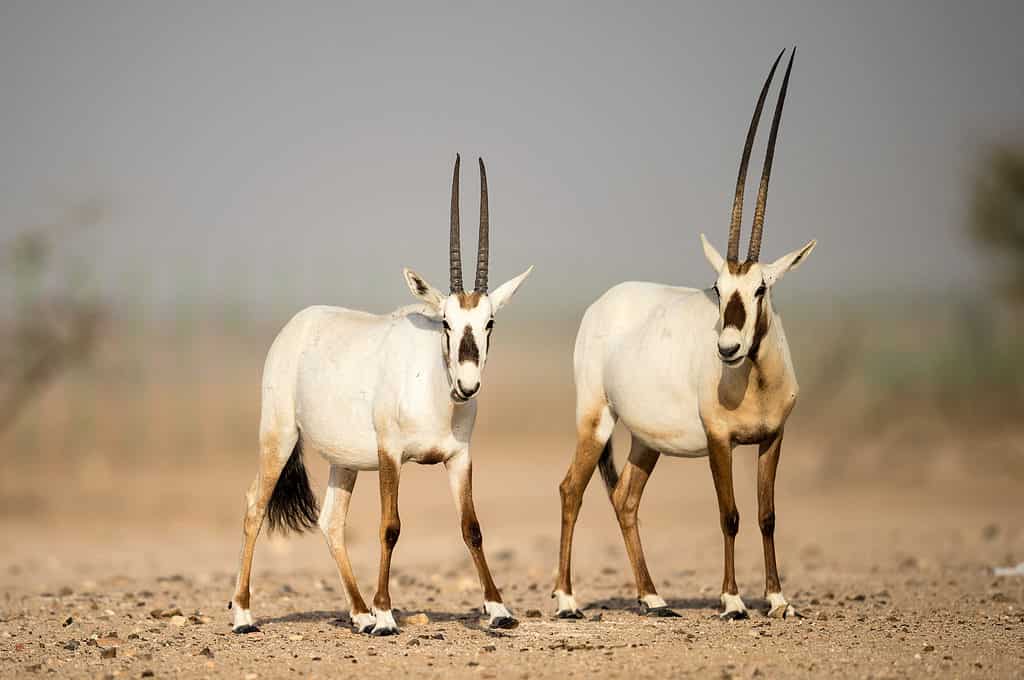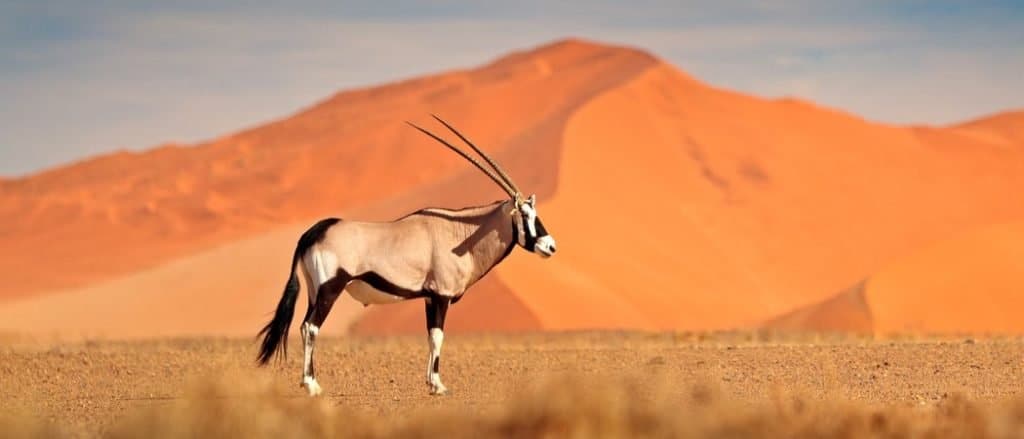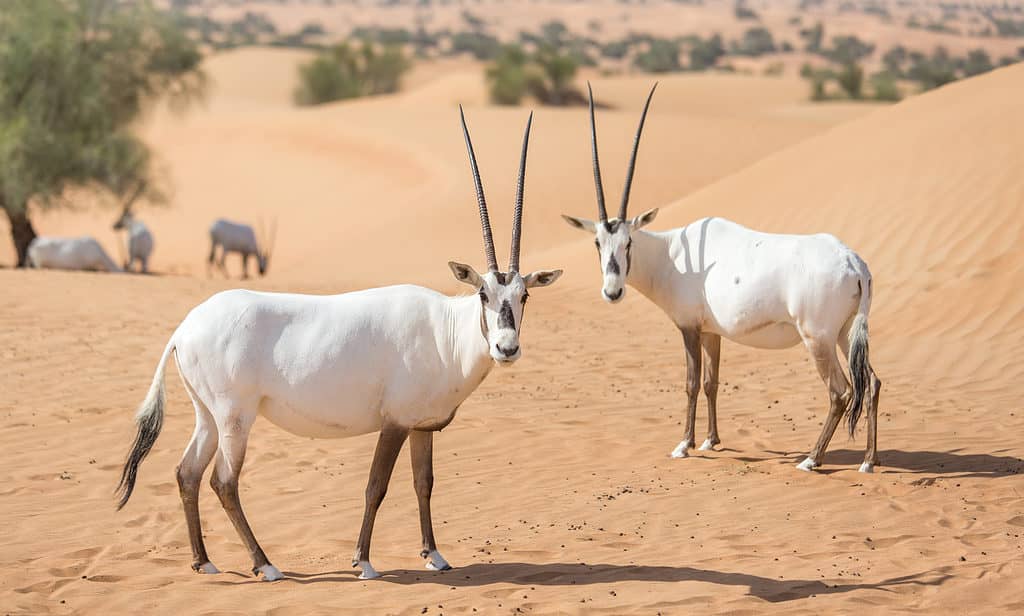The oryx is a genus of four visually-striking antelopes. They are large animals with long, straight horns and compact, muscular bodies. Oryx are native to Africa and the Middle East, where they inhabit deserts and dry plains. Like many desert animals, the oryx has unique adaptations that allow it to survive in its harsh environment. How long can oryx go without drinking water? And how do they survive without it?
What is an Oryx?

Oryx are large animals with long, straight horns and compact, muscular bodies. They are native to
Africa
and the Middle East.
©Nimit Virdi/Shutterstock.com
The oryx genus consists of four large antelopes featuring black and white coloring, short manes, thick necks, and long, spear-like horns. They are herbivores that live in desert environments in large herds of up to 600 individuals. These creatures are renowned for their horns. They use them to defend themselves from hungry lions and other predators. But people also hunt them for trophies, causing their numbers to dwindle in the wild.
Here are the four oryx species:
- Arabian oryx – Middle East
- Scimitar oryx – North Africa
- East African oryx – Eastern Africa
- Gemsbok – Southern Africa
How Often Do Oryx Need Water?

How long can oryx go without drinking water? At least nine to 10 months, possibly years.
©iStock.com/Ondrej Prosicky
The oryx can go without water for nine to ten months, possibly even years. And they don’t need much when they do drink. Although, female nursing calves may have higher water requirements.
Oryx don’t drink water in the traditional sense, but they do consume water in other ways. And much of their life is centered around retaining moisture. Their kidneys play a vital role in helping them survive by preventing water loss during urination.
How Do Oryx Survive Without Water?
The truth is oryx don’t survive without water. These animals get most of the water they need from their diet by stripping moisture from plant matter. Their habitats are sparsely vegetated, but they still manage to find grasses, roots, buds, and herbs. And they will travel long distances to find fresh grazing patches and water.
They survive through several adaptations and behaviors. First, their bodies can tolerate an increase in temperature of several degrees (up to 116 degrees Fahrenheit). They sweat very little, which allows them to conserve water. This helpful feature is called adaptive hypothermia and it allows their bodies to get rid of excess heat at night when temperatures drop.
Oryx can also detect faint variations in humidity from a long distance. Once they detect rising moisture levels, they lead their herds to water and vegetation.
The oryx avoids the hottest part of the day by finding shade and digging holes in the sand to shield them from high dry winds. And they graze at night when it’s cool, and the vegetation holds more moisture.
Their bodies are designed to withstand the harsh conditions of the desert. And their dark skin protects them from the sun, their thick eyelashes keep out sand, and their large hooves keep them from sinking as they walk. Their feces come out as hard pellets, ensuring no moisture is lost. And even their urine is very concentrated.

Oryx get most of the water they need from their diet by stripping moisture from plant matter. Their feces come out as hard pellets.
©Kertu/Shutterstock.com
What Does an Oryx Eat?
Oryx are herbivores that seek vegetation in their desert habitats. Sometimes they travel very long distances to find a new grazing area. But the more food and water they locate, the bigger their herds get. They average around 600, but they can grow into the thousands when conditions are right.
Oryx eat grasses, herbs, shrubs, succulents, juicy roots, legumes, buds, and fruits. They also consume extra water-rich plants like wild melons, acacia seedpods, and other vegetation that attracts and holds moisture. Oryx take advantage of water-laden plants after an afternoon rain, early in the morning, or late at night.
Why Are Scimitar-Horned Oryx Endangered?
The Scimitar-horned oryx went extinct in the wild during the 1980s from overhunting, human disturbance, drought, and loss of food. The Arabian oryx went extinct in the wild in the 1970s but has since been reintroduced in some areas. The East African oryx is endangered, but the gemsbok is not.
What Animal Can Survive the Longest Without Water?
The kangaroo rat wins this category by a long shot. It can go its entire life without water. And it’s the only animal on earth with this specialized desert adaptation. They have a unique metabolism and kidneys, and they get all the moisture they need from their diet.
The photo featured at the top of this post is © Ondrej Prosicky/Shutterstock.com
Thank you for reading! Have some feedback for us? Contact the AZ Animals editorial team.






